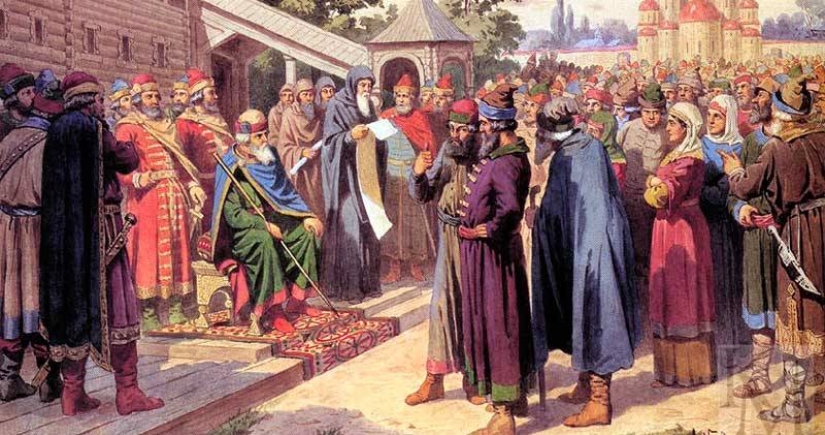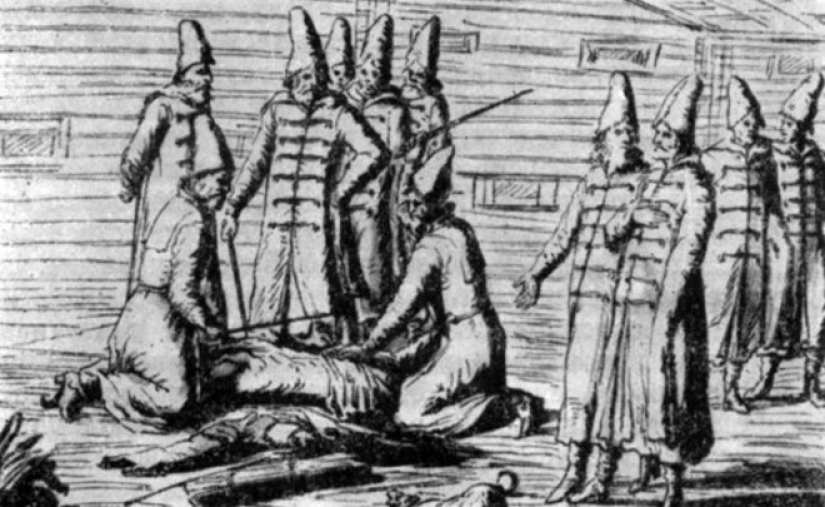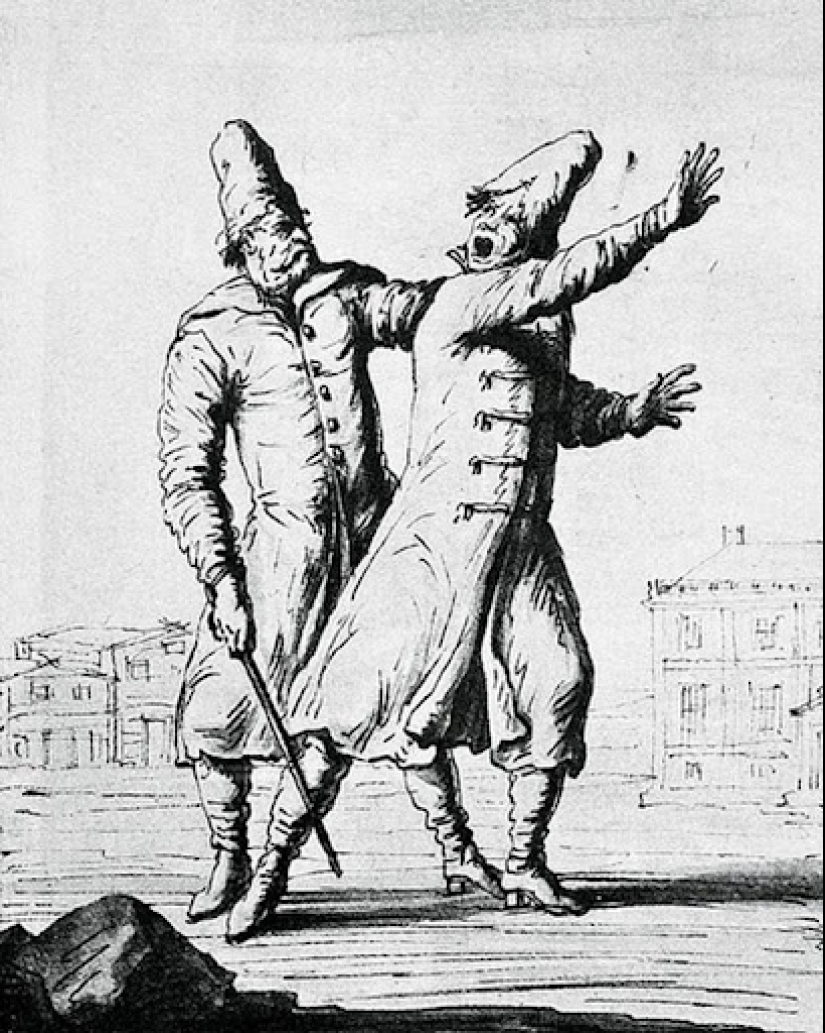The history of ancient punishment, or what they really say: "There is no truth in the legs"
Categories: History
By Pictolic https://pictolic.com/article/the-history-of-ancient-punishment-or-what-they-really-say-there-is-no-truth-in-the-legs.htmlEveryone knows that "there is no truth in the legs". But if you ask a person about how this expression appeared, he is unlikely to answer something intelligible. This is not surprising. because the origin of this saying goes back to ancient times and it is associated with a very painful corporal punishment.

Justice in Russia was arranged very simply, but the system of punishments was quite intricate. For many offenses there were their own, special punishments, and for commoners and noble people they could be different. One of the most common offenses in the old days, as well as now, was non-payment of debts.

Now collectors are engaged in problem debts, and in Ancient Russia their role was performed by bailiffs, who were called "righteous". They were the ones who had to ensure the execution of sentences according to the code of laws "Russian Truth", which appeared in the 11-12 centuries.
Knocking out debts was then called very delicately - "pravezh" (from the word "rule", that is, to collect). Kievan Rus borrowed this method from the Khan's Baskaks, whose task was to receive tribute from vassal lands. "He takes it with his hands, but gives it with his feet" - this is another Russian proverb, and it is also about this.
If the debtor could not repay the debt and did not have property that could be taken away from him in favor of the plaintiff, he was "ruled". The unfortunate person was laid face down or placed at a post, tied, and beaten on the legs below the knees with sticks for several hours a day. In order not to interrupt the torture, the tired executioners were replaced by new ones.

The beating took place on the square, at the confluence of people. The debtor was taken to the "pravezh" as a job, until he agreed to repay the debt. They were beaten every day, on the heels and calves, except on Sundays and big holidays, like Christmas or Easter. The "righteous" with sticks were not interested in where the financial bankrupt would take the money – the debt should be repaid, and the court costs reimbursed.
Although, the debtor, who had an iron health, could do without money. For each day of punishment, a part of the amount was written off from the offender. For example, 100 rubles could be "worked out" under sticks for a month of daily beatings. But they were beaten hard in those days and the chances of preserving their legs and sanity after a month of torture were small.
The screams of debtors being beaten by batogs spread very far, amusing some citizens, and arousing compassion in others. It was not uncommon for pitiful merchants to pay part or even all of the debt for the unfortunate debtor. This was very useful for karma, that is, it was considered a big plus in the face of the Lord.

Unfortunately, completely innocent people often got on the "pravezh". Some were framed by cunning usurers, others were deceived by business partners or even relatives. In the 16th century, there were cases when the landowner sent serfs to torture and they suffered pain for the sins of others.
It is impossible to call such a method of recovery effective. If the convicted person had money hidden somewhere, he gave it back after several hours of beatings, but most of the debtors really did not have a penny to their soul. Therefore, even after crippling a person, it was impossible to get him to fulfill his obligations.
When the legs turned into a real mess and it was already dangerous to beat further, a person could be given into temporary slavery to the plaintiff "head to toe". But such a slave, unable to move independently, was not needed by anyone. Even released after the "pravezh" to freedom, the poor man could no longer work fully, having become disabled.

The original essence of the saying "There is no truth in the legs" is that beating cannot solve the problem. The expression began to be used where it was necessary to show the absurdity of some action. Later, the true meaning was forgotten and the phrase is now used if they want to point out the meaninglessness of standing on your feet, if possible, to sit down.
And as for the "pravezh", this barbaric punishment was practiced in Russia for centuries and it was abolished only by Peter I. The reformer tsar sought to wrest his country from the captivity of Tatar savagery and bring it closer to European civilization.
Keywords: Court | Russian federation | History | Money | Sentence | Debtor | Laws | Ancient russia
Post News ArticleRecent articles

Sometimes you see a tattoo on a person and think: "Why did he do it at all?". A familiar feeling? If you have never experienced it, ...

Taxi ride like a lottery — you never know if you will pull the winning ticket. Even the official services like Uber does not ...
Related articles

A music album is not only a collection of tracks, but also an example of fine art. Each cover carries a certain meaning, and behind ...

In November 69 BC, she was born Cleopatra, the last Queen of Egypt from the Macedonian dynasty of the Ptolemies. Cleopatra, perhaps ...

A good sniper doesn't have to be a career soldier. This simple postulate was well understood by the Red Army soldiers who ...

Finnish photographer Juha Tanhua has shot an unusual series of "space photos". Astrophotographic images of stars, galaxies and ...